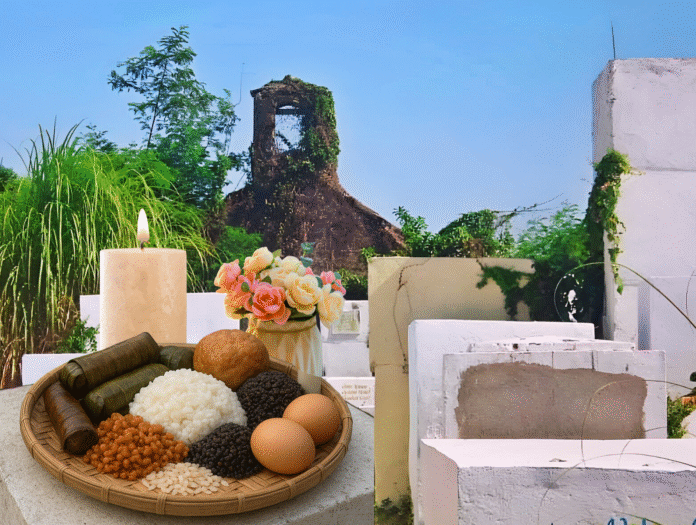TARLAKENYO (Nov. 1, 2025) – As the scent of candles fill the air this Undas, millions of Filipinos flock to cemeteries in a familiar national ritual of remembrance. But in the provinces of the north, including the Ilocano communities in Tarlac, and to the bustling mix of communities the act of remembering carries a unique, tangible flavor: the offering of food, known as atang.
On tombs and home altars, families carefully arrange plates of suman, dudul, and busi—delicacies made from sticky rice—alongside fresh eggs, tobacco, and a glass of basi (fermented sugarcane wine). This ritual, practiced for generations, is more than just a tradition; for many, it is a vital line of communication with those who have passed.
“As explained by the National Museum of the Philippines, atang is usually prepared every Undas and on days the dead are remembered,” the institution notes, highlighting that similar practices exist among other ethnic groups, called alay or halad.
For many locals across Tarlac, preparing atang is considered an act of love and continuity. It is widely seen as a way to include departed loved ones in the family gathering, creating a sense that they are still present, sharing a meal. The ritual is deeply valued as an expression of gratitude for the deceased and is widely acknowledged for the comfort it provides to the living, helping them feel connected to their ancestors.
This sentiment is echoed in academic research. A study by Jeff Clyde Corpuz, a senior lecturer at De La Salle University, found that for 86% of Ilocano respondents, remembering the dead was the most significant element of atang.
“They claimed that atang maintains a tradition of remembering the dead; it is an expression of gratitude; it provides comfort to the loved ones,” Corpuz stated in his paper, “Death and Food Offering: The Ilocano ‘Atang’ Ritual.” He draws parallels between atang and Mexico’s Dia de los Muertos, seeing it as a model for the communion between the living and the dead.
A Different Path to Remembrance: The Catholic Church’s Perspective
While the practice is deeply ingrained in local culture, the Catholic Church offers a different perspective on how to best express love for the departed.
In guidance issued by the Archdiocese of Manila Office of Exorcism (AMOE), the Church acknowledges the sincerity behind atang but clarifies its official stance. The souls of the dead, being in the spiritual realm, no longer require physical sustenance.
“What truly helps them are our prayers, the Holy Mass offered for their souls, and acts of charity done in their memory,” the guidance states. These spiritual offerings, the Church teaches, are what bring real benefit to the souls in Purgatory and reflect a faith in God’s mercy.
The Church raises particular concern when atang is motivated by fear. “When atang is performed out of fear of spirits or as a way to avoid bad luck, it goes against our Catholic belief in the one true God,” the AMOE document clarifies. Such actions, it warns, can veer into superstition or idolatry, placing faith in powers other than God.
Instead, the Church invites the faithful to channel their affection through prayer, lighting candles, visiting graves, and having Masses said for the deceased. “These are the true expressions of love and faith that honor both our departed family and our Lord who gives eternal life.”
A Tradition in Transition
In Tarlac, these two perspectives often coexist. Many Catholic families now blend the cultural practice of atang with the Church’s prescribed prayers, seeing the food offering as a symbolic gesture that accompanies their spiritual petitions.
The enduring practice of atang reveals the complex tapestry of Filipino identity—where indigenous traditions of ancestor veneration intertwine with centuries of Catholic faith. As families in Tarlac and across the Ilocandia continue to set a plate for the departed, they are not just offering food; they are nourishing a connection that, for them, death itself cannot sever.


